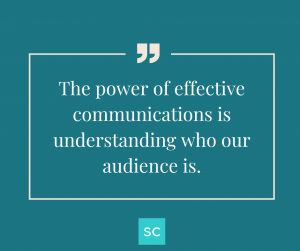Multicultural Leadership Communications
Leadership is an essential aspect of modern-day organizations. With the increasing diversity in the workforce, leaders must have the skills to communicate effectively with individuals from different cultural backgrounds.
In a recent survey, randomly-selected colleagues rated managers with broader multicultural experiences as more effective leaders.
 Our CEO and Founder, Jessica Chen, recently hosted a Soulcast Media | LIVE event on LinkedIn, where she interviewed the CEO of the Multicultural Leadership Institute, Joy Chen. They shared tips and personal stories about multicultural leadership communications.
Our CEO and Founder, Jessica Chen, recently hosted a Soulcast Media | LIVE event on LinkedIn, where she interviewed the CEO of the Multicultural Leadership Institute, Joy Chen. They shared tips and personal stories about multicultural leadership communications.
1. Global Perspective
Having a global perspective can help all of us in our careers. If we aren’t able to communicate in a global working world, it will limit our career opportunities. This is why it is critical, especially for leaders, to embrace a global perspective.
Consider the following:
- Cultural Awareness – Learning to be culturally aware will help us broaden our global perspective and become better leaders. For example, one way to expand our cultural awareness is to acknowledge our team’s different cultural backgrounds and actively learn about customs, holidays, values, and more. The more culturally aware we can become, the more our team will feel seen and included.

- Expand Groups – It is very easy for us to surround ourselves with people who are similar to us. However, to become better multicultural leaders, we must expand the groups we are with. For example, when we spend time with people who are different, we can hear their viewpoints, which may spark new ideas and innovation.
Cultural Sensitivity – As leaders, we must be culturally sensitive and avoid making assumptions based on cultural stereotypes. Assumptions about others can keep them out of our groups and prevent us from connecting with them. For example, not inviting a team member to an event based on an assumption about their preferences would be culturally insensitive. Instead, we should strive to connect with everyone on our team.
Being culturally aware, expanding our connections, and being culturally sensitive will help us broaden our global perspectives.
2. Effective Communications
The power of effective communications is understanding who our audience is. Once we know our audience, we can tailor our message to them. This is especially important when working in a cross-cultural environment.
Consider the following:
- Cultural Fluency – During the Soulcast Media | LIVE, Joy talked about cultural fluency and how we can learn to be culturally fluent. For example, if we want to increase our cultural fluency, we can travel to other countries or read about different cultures. However, the fastest way to increase cultural fluency is to build one-on-one relationships with people. We must consciously and intentionally build these one-on-one relationships with people who are different from us.
- Active Listening – As leaders, practicing active listening will help us understand our teams and their perspectives. When we do this, we can respond appropriately. When we actively listen, we put away all of our distractions, and ensure we give the other person our full attention. For example, one way to actively listen is to repeat what the other person said. We can say, “Jane, what we think you are trying to say is the project you are working on will need the help of the marketing department. Is that correct?” This allows Jane to clarify her thoughts. Actively listening is critical, especially when working with people from different cultures.

- Adaptability – We may need to adapt our communications style depending on who we speak with. As leaders, we must be mindful of the communication styles of our team members. For example, we may have team members who prefer to communicate via email, rather than over the phone. Our team members may feel more confident writing their thoughts, rather than speaking them over the phone. When working cross-culturally, we need to be flexible in our communications to accommodate everyone on our team.
As leaders working cross-culturally, effective communications will ensure everyone on our team is seen and heard.
3. Underrepresented Groups
During the Soulcast Media | LIVE, Jessica and Joy were asked how to develop underrepresented groups in the workplace. There are several ways to be an ally for underrepresented groups in the workplace.
Consider the following:
- Pave The Way – One way we can be an ally for underrepresented people is to pave the way for them to have their ideas heard. For example, if we are in a meeting and we know our colleague is perhaps too shy to speak up, we can pave the way for them to share their thoughts. We can say, “There are quite a few roadblocks with our upcoming project, but after speaking with Janet, we may be able to overcome several of them. Janet has some great ideas on how we can do this. Janet, would you feel comfortable sharing your ideas?” Paving the way allows our underrepresented colleagues to have their ideas and voices heard.
- Give Credit – Many conversations happen when we aren’t in the room. These conversations can largely determine people’s perspectives of us. If we know others are doing great work, we can talk about them and the good things they are doing in these conversations. For example, if we are speaking with our superiors about positive client feedback, we can take this opportunity to advocate for our colleague who came up with the idea. When we have underrepresented colleagues, we need to think about how to give them credit.
- Mutual Learning Environment – When people are excluded, silence becomes safer, so it is essential to become an ally for those who are underrepresented. We can do this by promoting a mutual learning environment. This means strategically structuring our workplaces so everyone’s ideas can be seen and heard. For example, one way to do this is to structure our meetings so everyone can have a chance to speak, rather than only the loudest people in the room. We can send out a meeting agenda ahead of time, so everyone can gather their thoughts. We can also have people write down their thoughts and send them before the meeting begins. The more chances we give for everyone’s voices to be heard, the more creativity and innovation will happen.
Everyone can take a proactive approach to being an ally for underrepresented groups.
When leading multicultural teams, we need to expand our global perspective, engage in effective communications, and create environments where everyone feels safe sharing their thoughts and ideas.
Check out Jessica’s Youtube Channel if you want to see the full version of this Soulcast Media | LIVE conversation.
___
Whenever you’re ready, there are 3 ways we can help you:
- Discover your communications style, so you know where to start. Over 4,000 people have found theirs here.
- Attend our monthly communication workshop to build communications confidence (new topics: public speaking, advocating for yourself, building credibility, etc) here.
- Get your brand in front of 43k+ people by sponsoring our newsletter or Soulcast Media | LIVE LinkedIn events [contact: hello@soulcastmedia.com]











